Breaking Course Records at Pikes Peak
TotalSim US and Honda Performance Development Collaborate to Break Pikes Peak Course Record
The Situation:
Honda Performance Development (HPD) needed accurate aerodynamic simulation results of the race version of the Acura TLX-GT in order to tune the car for the 2018 Pikes Peak International Hill Climb race. Providing the results in a timely manner was critical to the development.
Client Challenge:
Leading up to the Hill Climb, Acura Motorsports already held records on the mountain with RealTime Racing Driver Peter Cunningham. However, they wanted to further improve overall and aerodynamic performance of the Acura TLX-GT to possibly set another record in the Pikes Peak Open Class. The Pikes Peak International Hill Climb is a grueling 12.42 mi, 156 turn race to the 14,115-foot summit.
Type of TotalSim Engagement:
HPD, having worked with TotalSim before on the TLX-GT and other projects, knew they could count on us to provide the necessary support and to get information to them in the timeline needed. TotalSim in 2018, and then again in 2019, provided Computational Fluid Dynamics (CFD)* and aerodynamic design services to improve the performance of the Acura TLX-GT for the Pikes Peak run.
What TotalSim did:
Over the two projects, TotalSim refined the splitter design, completed a rear wing optimization and redesigned the diffuser and rear fender all to improve aerodynamic performance. Both projects had limited time lines and budgets so TotalSim leveraged OpenFoam with their own motorsports workflow to complete the project within the restrictions.
The 2018 improvements included increasing the splitter design downforce by over 13% and the rear wing downforce by 3%. With the redesigned splitter and the rear wing at its optimal angle, the 2018 vehicle improved by nearly 22% in overall downforce and over 7% in Lift to Drag ratio. All this was completed in less than 20 CFD simulations.
Then in 2019 the focus was to continue refinement of the rear wing (shown in the images below) and to redesign the rear fender and diffuser. Additional improvements were realized for the rear wing, but more substantial improvements were obtained in the redesign of the diffuser and the rear fender. While there was a small (0.3%) increase in drag, the benefit was an overall 14.3% increase in downforce and a corresponding L/D improvement of over 14%.
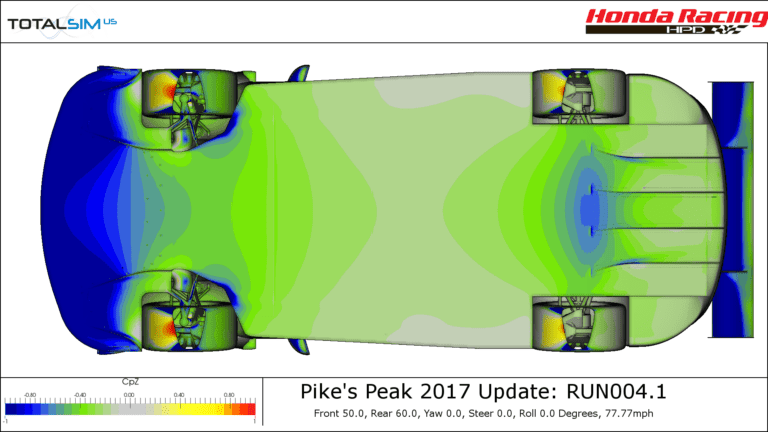
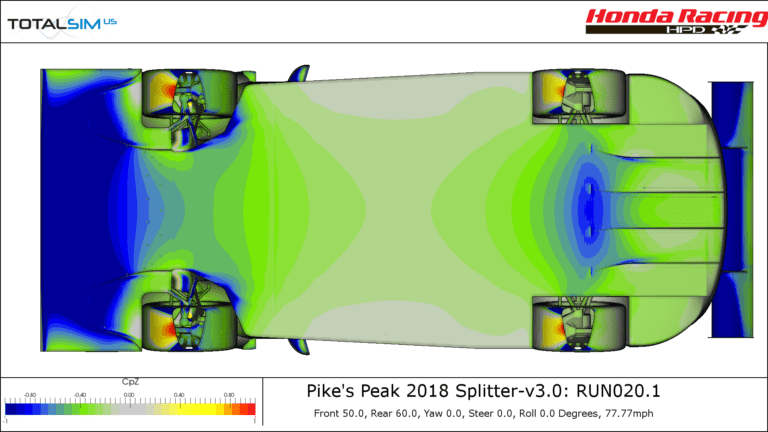
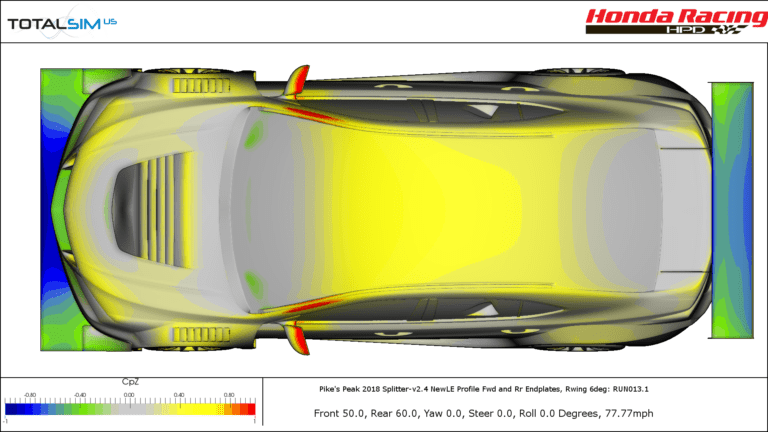
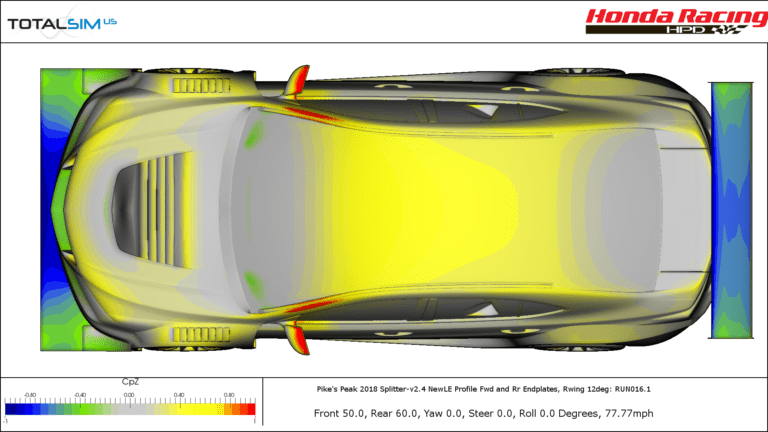
Results:
Peter Cunningham drove the 2018 Acura TLX-GT finishing first in class and third overall at Pikes Peak while shattering the course record for its class. The winning time of 9:27.352 bested the 2017 course record by 5 sec. Additionally, Cunningham competed in the Empire Hill climb (Empire, MI) finishing first overall in 18.539 sec, besting the next finisher by over 3 sec.
In 2019, Cunningham drove the updated Acura TLX-GT to a first in class finish with a winning time of 09:24.433 and setting another course record for the Pikes Peak Open class.

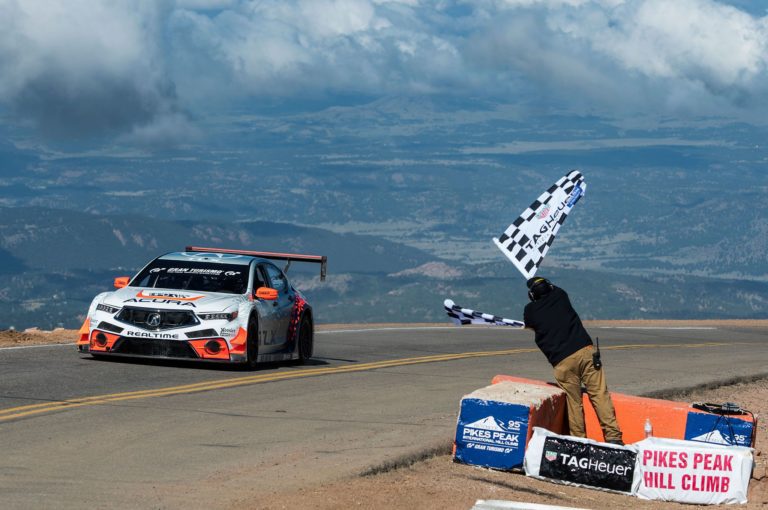
Learn more about the ways TotalSim can help you overcome your aerodynamic challenges
Learn more about TotalSim’s Motorsports engagement
*What is CFD?
Computational fluid dynamics (CFD) is a branch of fluid mechanics that uses computer numerical analysis and data structures to analyze and solve problems that involve fluid flows, typically solved on large supercomputers. Fluid mechanics plays a significant role in the engineering process when developing new designs. Analyzing the aerodynamic and thermal qualities of a product using experimentation is a well-established approach however experimentation can be costly, limiting, time-consuming, and difficult to execute especially on a large scale. Progression of computing power has allowed the field of CFD to prosper acting as a complement to physical testing and in some cases replacing it. CFD is the science of predicting fluid flow, heat transfer, mass transfer, chemical reactions, and other flow properties by solving governing fluid flow equations using numerical methods. Across the industry, CFD is routinely used to drive product development, troubleshoot issues, study and optimize new designs and concepts, and map performance. CFD methods are heavily used across many disciplines with motorsports being a leading proponent.
